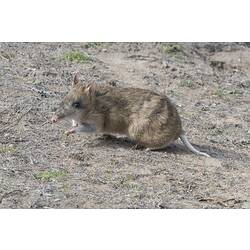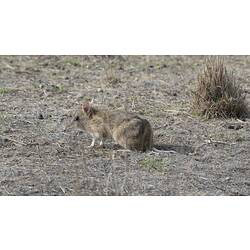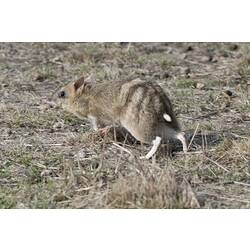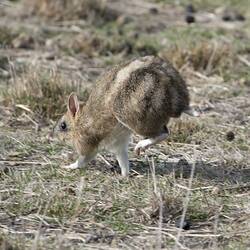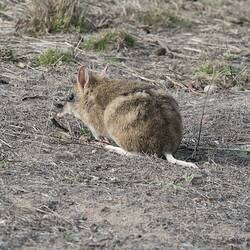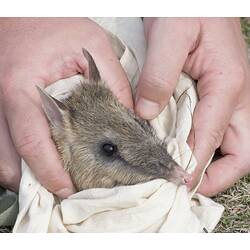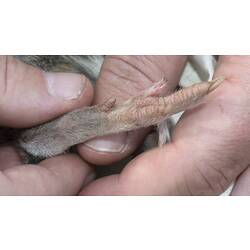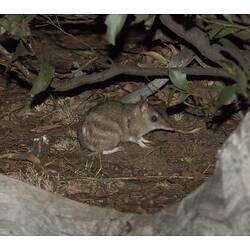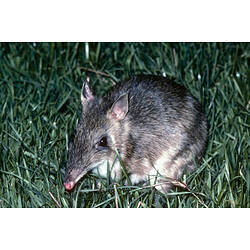General Description
Upper body fur brown and grey, marked with three or four white bars; underparts and feet white. Long nose and ears. White tail. Body up to 35 cm, tail up to 11 cm.
Biology
Eastern Barred Bandicoots eat plants, small invertebrates, fungi and fruit, and are active at night. Females are pregnant for just 12 days, which allows them to produce up to five litters per year. The mainland subspecies of Eastern Barred Bandicoot is listed as extinct in the wild. Eastern Barred Bandicoot's were once common across the grassy woodlands of Victoria, but these environments were lost to housing development and agriculture. Predation by foxes and competition with rabbits are also linked to their decline. In the 1980s, a small population was found living among old car wrecks at the Hamilton tip in western Victoria. Thanks to the efforts of many dedicated conservationists and volunteers, the species now occurs at three predator free sanctuaries where the bandicoots can recover in their native grassland habitat.
Distribution
South-eastern mainland Australia and Tasmania.
Habitat
Grasslands with dense tussock grass and low shrubs.
More Information
-
Animal Type
-
Animal SubType
-
Colours
Brown
-
Habitats
-
Where To Look
-
When Active
Nocturnal
-
Diet
Omnivore
-
Diet Categories
Invertebrates, Fungi, Insects
-
Endemicity
-
Conservation Statuses
CITES: Not listed, FFG Threatened List: Endangered, EPBC Act 1999: Endangered, IUCN Red List: Vulnerable
-
Taxon Name
-
Scientific Author
Gray, 1838
-
Common Name
Eastern Barred Bandicoot
-
Kingdom
-
Phylum
-
Subphylum
-
Class
-
Superorder
-
Order
-
Family
-
Subfamily
-
Genus
-
Species Name
gunnii

